Sealife guideThe marine echinoderms
Last updated on 09/08/2025 at 11:26 PM
The phylum of echinoderms, literally « hedgehog skin », includes 5 classes and totals around 6,000 species. The most well-known of them is undoubtedly the starfish, characterized by its star-shaped form with 5 arms, or the sea urchin with its spines.
Taxonomy
Echinoderms are divided into 5 classes:
- the asteroids. This class includes the most well-known echinoderms, the starfish.
- the crinoids. This class includes sea lilies and feather stars.
- the echinoids. Along with the asteroids, this class includes the most famous echinoderms, the sea urchins.
- the holothurians. This class includes sea cucumbers or holothurians.
- the ophiuroids. This class includes brittle stars, which closely resemble starfish with their flattened body and long, thin arms. Also included in this class are gorgonocephalans.
Description
Echinoderms, as the etymology of their name suggests, are animals whose outer skin surface is covered with spines, like a hedgehog. Echinoderms are primarily characterized by:
- their shape, which displays a 5-fold radial symmetry
- the presence of an internal skeleton made of calcareous plates or spicules
- the presence of an aquifer system, called the ambulacral system, which allows them to move and feed. The aquifer system is essentially a hydraulic system that enables the movement of suckers.
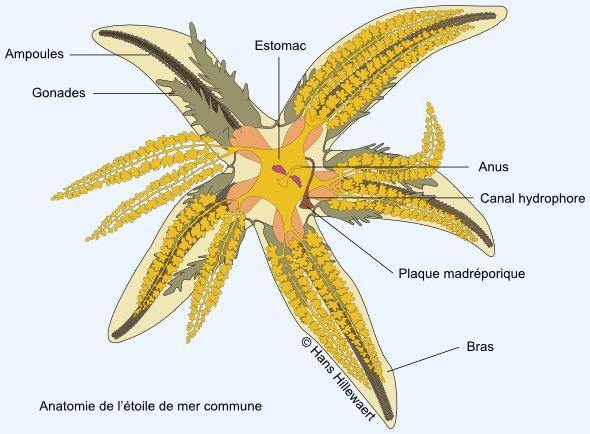
The anatomy of the common starfish
Geographic Range
Echinoderms can be found throughout all the oceans and seas across the globe, at all latitudes and depths, even at very great depths.
Habitat
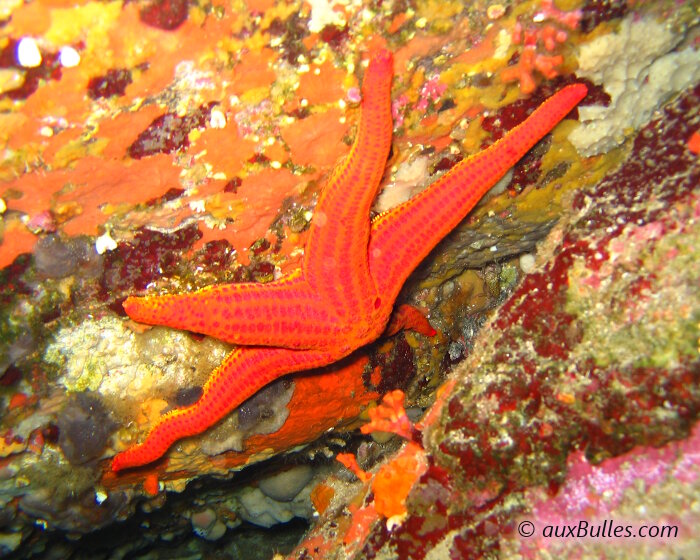
A red starfish under a rocky overhang
Echinoderms are sedentary and benthic animals, meaning they live resting on the seafloor. Echinoderms can be found on all types of substrates. All echinoderms are mobile, with the exception of crinoids, which are fixed to a substrate.
Diet
The diet of echinoderms is very varied depending on the species: decomposing organic matter, mollusks, …
The presence of spines in echinoderms keeps many potential predators at bay due to their size. Ultimately, echinoderms are preyed upon by very few predators.
Reproduction
Echinoderms primarily exhibit:
- sexual reproduction through the release of gametes into seawater followed by external fertilization. However, to ensure the species' survival, this requires a significant quantity !
- for certain classes like starfish and brittle stars, asexual reproduction through the splitting of part of the body and regeneration of the individual from that fragment.
Tips for observing
Starfish and sea urchins are often easily observable from the beach with a mask and snorkel, but be careful with your feet !
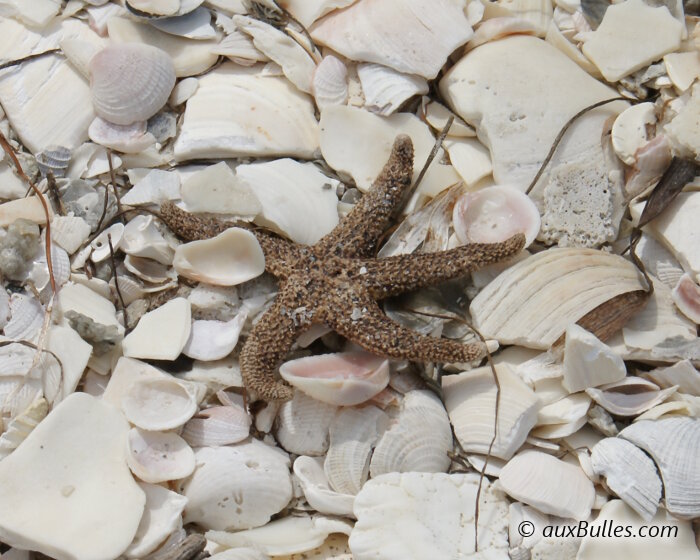
A dried starfish on a beach littered with shell fragments !
Otherwise, take a walk on the beach and carefully observe the sand and you'll surely discover some hidden treasures of nature, like a sea urchin test or a starfish dried by the sun !
Some marine echinoderms to discover

Australian sea apple
(Pseudocolochirus axiologus)
(Pseudocolochirus axiologus)
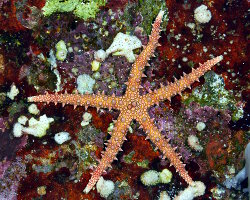
Egyptian sea star
(Gomophia egyptiaca)
(Gomophia egyptiaca)
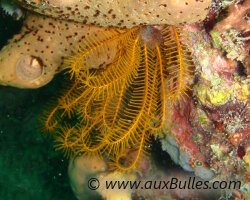
Golden crinoid
(Davidaster rubiginosus)
(Davidaster rubiginosus)
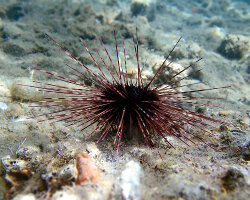
Hatpin sea urchin
(Centrostephanus longispinus)
(Centrostephanus longispinus)
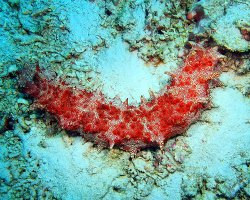
Red striped sea cucumber
(Thelenota rubralineata)
(Thelenota rubralineata)
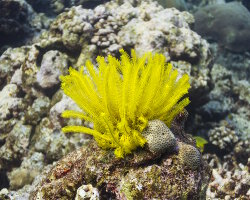
Schelgel's feather star
(Comaster schlegelii)
(Comaster schlegelii)
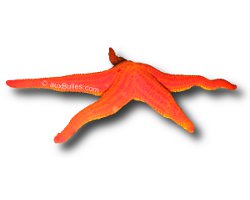
Smooth starfish
(Hacelia attenuata)
(Hacelia attenuata)
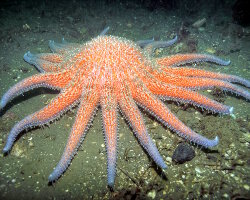
Sunflower sea star
(Pycnopodia helianthoides)
(Pycnopodia helianthoides)
Our latestUpdates
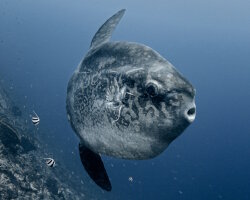
Friday, September 5th 2025
The bump-head sunfish
Learn about the bump-head sunfish (Mola alexandrini), the world's heaviest bony fish, its habitat in tropical and temperate oceans, diet of jellyfish, deep-water behavior and record size over 6,000 lbs.
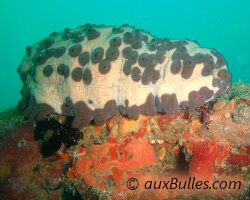
Wednesday, September 3rd 2025
The chocolate chip sea cucumber
The chocolate chip sea cucumber has a massive cylindrical body that is beige in color, covered with a set of dark brown pustules resembling chocolate chips that protrude slightly from the surface, giving it a resemblance to a cookie, hence its french name. It can reach a length of about 12 inches when fully grown.
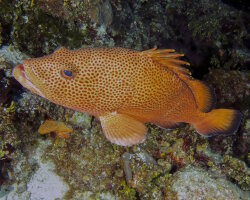
Monday, September 1st 2025
The red hind grouper
The red hind grouper has a distinctive appearance, usually beige to brown in color, with numerous red or brown spots covering its entire body and the base of its fins. It is often found in the shallow waters of coral reefs and rocky areas, where it hides in crevices and cavities.
Photo of the Day
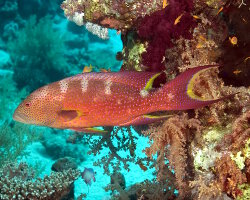
Mérou croissant de lune
(Variola louti)
(Variola louti)
